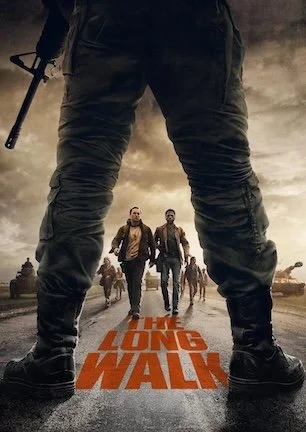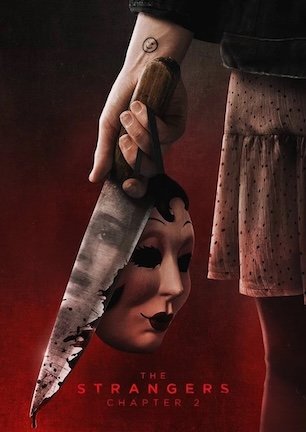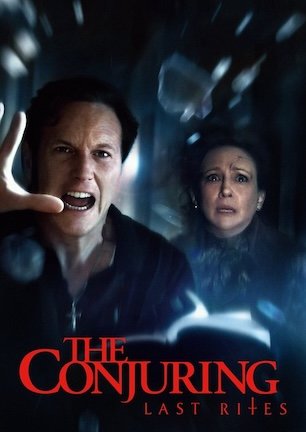Studio: Universal Pictures/MGM
Director: Nia DaCosta
Writer: Jordan Peele, Win Rosenfeld, Nia DaCosta
Producer: Ian Cooper, Win Rosenfeld, Jordan Peele
Stars: Yahya Abdul-Mateen II, Teyonah Parris, Nathan Stewart-Jarrett, Colman Domingo, Kyle Kaminsky, Vanessa Williams
Review Score:
Summary:
The mythical figure of Candyman takes on a new form when a struggling artist searches Cabrini-Green for inspiration and discovers he has a startling connection to the urban legend.
Review:
Fast-fading public interest. It’s not just for Netflix movies anymore.
I’m touching on this side topic within coverage of “Candyman” 2021, but really, the phenomenon applies to any highly hyped project that buzzes with the energy of ten billion bees only for audiences to shrug “eh” when that film finally releases. It specifically happens in horror quite often.
How many times has festival chatter pre-pumped a production as the best thing since sliced bread, then once it went out to the public, unimpressed viewers responded with, “That’s all?” Remember when a big genre website infamously promised a certain “found footage” reboot would be “a game changer,” except embarrassingly, that movie most certainly didn’t change so much as a dust mote? I’ve lost count of cases where something was championed as breathtaking, groundbreaking, or an unforgettable “must-see,” yet those touted titles became marginal movies no one has talked about since.
“Candyman” fell prey to a comparable fate. Through no fault of the movie itself, considerable interest in rising talent reimagining a contemporary classic combined with COVID-induced delays to create kooky conditions for “Candyman” to swirl near the center of horror fan hubbub for nearly three years.
From the time it was announced in 2018 to the time it came out in 2021, “Candyman” felt like a fixed feature in the fright film social sphere, whether that meant yet another online article somewhere or trending again on Twitter for one reason or another. One day it might be speculation over what role original Candyman actor Tony Todd would play. Most days it was anger expressed at anyone who associated “Candyman” with the more famous name of producer Jordan Peele instead of director Nia DaCosta, usually under a projected presumption of misogynist marginalization. Then there were countless release date changes resulting in frustrated folks wondering when they might actually be able to see the movie, where, and under what circumstances.
But amidst calendar-related complaints and controversies over which creators received more credit, “Candyman” mostly courted feverish anticipation. Mainstream horror movies about Black people, by Black people, and primarily for Black people are rare. Amplified by increased attention on hot button topics in the wake of George Floyd, Breonna Taylor, and the Black Lives Matter movement, “Candyman” was rightfully shaping up to be a major milestone for POC audiences and artists alike, not to mention for longtime franchise fans who hadn’t seen a new “Candyman” movie since 1999. When the film finally debuted in theaters though, all of that discourse seemingly dried up faster than a drop of water in a desert.
Since I wasn’t comfortable exposing myself to a life-threatening illness by sitting in an AMC seat stained with the butt sweat of 10,000 strangers, I opted to wait for “Candyman” to come home. I worried that because I’d be behind everyone who was eager to see the film sooner rather than later, I’d probably have a hard time sidestepping spoilers, or be out of the loop on virtual water cooler conversations that would undoubtedly follow the film.
Except neither of those things happened. Instead of fulfilling the imaginary promise people invented regarding its cultural importance and supposed cinematic significance, “Candyman” just came and went like regular movies usually do. The critical consensus was that the film was fresh enough to hold a high rating on Rotten Tomatoes. But there weren’t overwhelming accolades or analyses commending incredible achievements like it seemed there would be given how much real estate “Candyman” occupied during 30+ months of buildup.
Again, that’s not on the movie. That’s on everyone who held up “Candyman” like a golden calf to be worshipped before the idol had even been cast in molten ore. Yet this still speaks to how, like the fictional figure, “Candyman’s” reputation grew to mythical proportions while the actual movie ended up as a down-to-earth entity. Many wanted a colossus whose inarguable success would exemplify some of the many reasons why we should proudly promote women directors, stories themed to minority struggles, and greater representation in film. I wanted that too. But “Candyman” only delivers average entertainment on the fright front, so previously vocal people merely moved on when it became evident “Candyman” wasn’t the landmark they’d hoped for.
Independent of its identity as a horror film, “Candyman” is deeply steeped in subjects such as discrimination, systemic oppression, police brutality, and other issues confronted daily be people of color. Unfortunately, this means it was a foregone conclusion that race-based negativity would predictably plague dishonest criticism regarding the movie’s messaging.
Certain people, like the kind who contend there’s nothing wrong with the confederate flag for instance, will bitch about “go woke, go broke” liberals shoving the film’s gay couple in their faces, or moan about how all of the white people in “Candyman” are evil. Although their motives for saying so are, they’re not necessarily wrong about that last point. Other than the gay boyfriend, I’m having a hard time recalling a white character portrayed positively. A dismissive art critic downplays main character Anthony’s art as a clichéd attack on gentrification, a common copout from those tired of seeing the same inconvenient truths repeated again and again in the news. Vain teenagers bully the only Black girl at their college prep school. Then there are the flagrantly racist cops who freely shoot first and conspire to cook up cover stories later.
The thing is, the filmmakers aren’t wrong to portray white people this way either. Recent events have proven that problems of prejudice run rampant in law enforcement. A new viral video pops up every day of another Karen demanding to speak to a manager if a brown person seemingly slights her. “Candyman” has a lot to say about such things, and most of its metaphors aren’t subtext but context.
However, I’m going to cowardly step out of any examination of “Candyman’s” social commentary. As mentioned before in similar situations, I’m a milquetoast white guy. For me to even attempt tackling “Candyman” from an angle of how it speaks to the Black experience would be inappropriately absurd. Meaningful matters are better left for academically astute observers to dissect in detail, not a quipping creature feature critic chiefly approaching the movie strictly as a supernatural slasher.
And as a supernatural slasher, “Candyman” is just okay, no more, no less. Flashes of clever creativity lead me to believe if it didn’t fight so hard to be ordinary, possibly under the non-negotiable advisement of studio suits only interested in widespread accessibility, bigger risks might have paid off with an “extra-“ to put in front of that word.
Initial atmosphere starts suspense off strong. Backwards production company cards and an upside-down stroll through a Chicago skyline create a disorienting sense of being unable to anchor your viewpoint. While that happens, Robert Aiki Aubrey Lowe’s dreamy score completes the dizzying effect with purposefully inconsistent time signatures whose pauses and suddenly sped-up beats weave a wonderfully off-balance tone.
Further in the film, terrifically tight production design complements suggestions in the storyline through commanding visuals, specifically art gallery displays that make direct and indirect statements about what’s taking place in the movie. Each element of this collective creativity stays tuned to what other pieces are doing, and seeks to accentuate those intentions while concurrently aspiring to individual artistic goals.
These mesmeric moods supply storytelling naturally through deliberate audiovisual design. Because the film’s first hour structures around such cinematic strengths so carefully, I think that’s why the hectically edited last act feels like a rushed re-cut to trim back these trappings into a more traditional thriller, which is where the film starts flattening.
Down the back nine, “Candyman” separates its key characters and strays from the main arc so scenes can slip in loosely-related kills and a secondary story about Anthony’s girlfriend encountering career conflict with interchangeable art world personalities. These dithering developments disrupt narrative rhythm at a time when the tale of Anthony’s descent into madness should be consistently intensifying, not being put on pause.
Once “Candyman” winds down to its conclusion, the desire to serve dual purposes, one being a distinct artistic exploration and the other satisfying the standards of a common chiller, delivers a movie that can only be partially effective by trying for both simultaneously. That’s good enough to make a moderate mark, although corners curved around the original script (why is Kyle Kaminsky billed fifth when he barely appears at all in the final version?) keep “Candyman” from growing into the truly massive monster its creators probably intended. Ultimately, that will be the reason why this “Candyman” can’t sustain faithful believers to the same degree that the 1992 original still can. How quickly everyone clammed up about the film should have been a clear clue.
Review Score: 60






It assumes everyone watching must be a dimwit too dense to understand how the most basic storytelling concepts work.